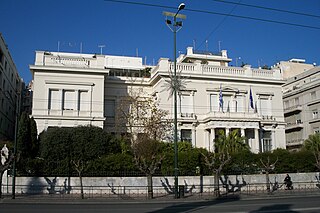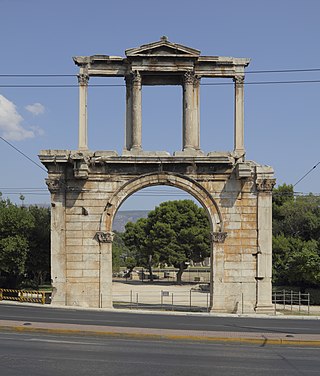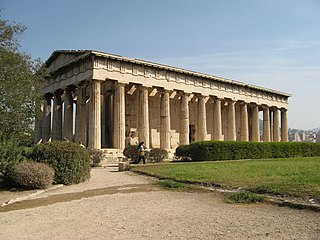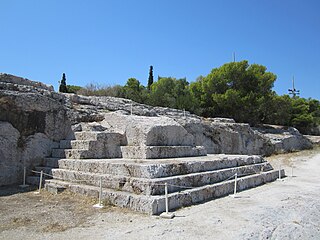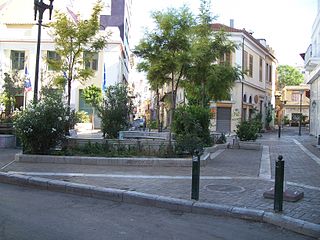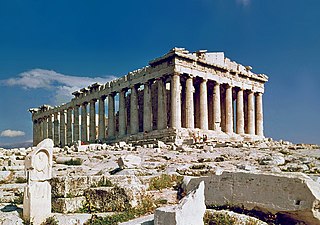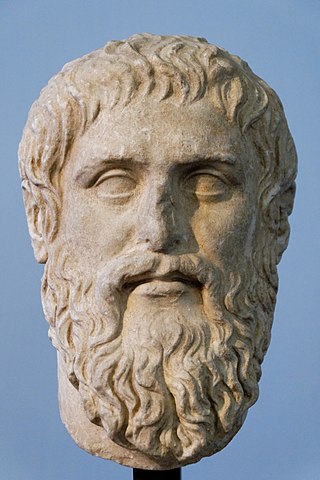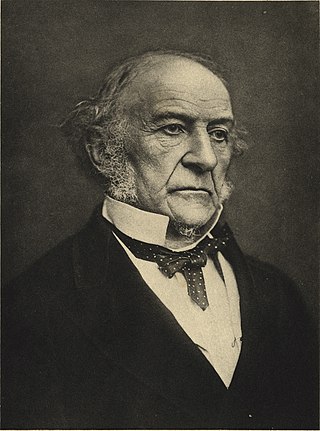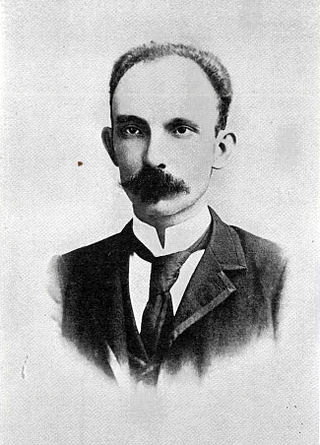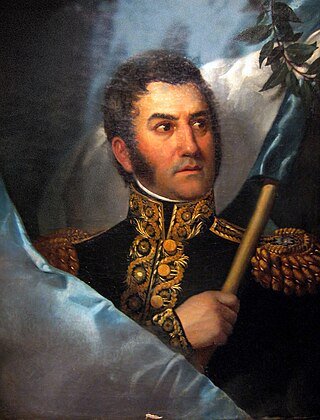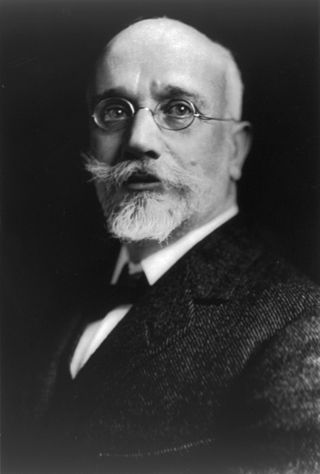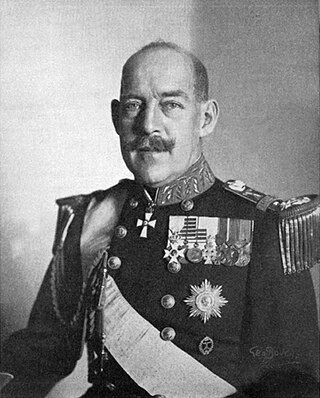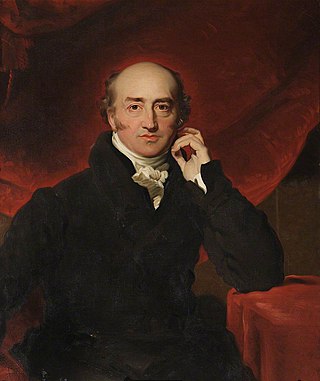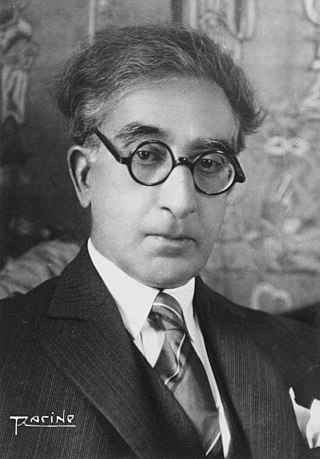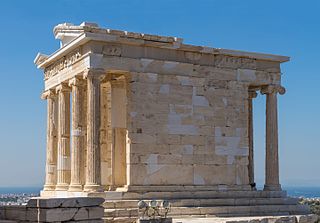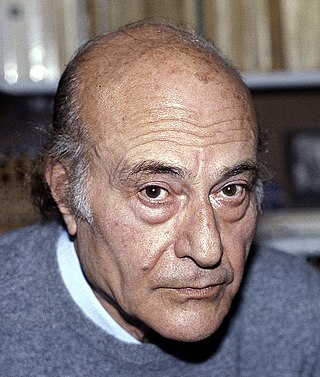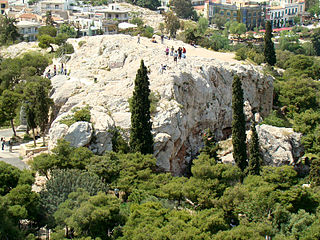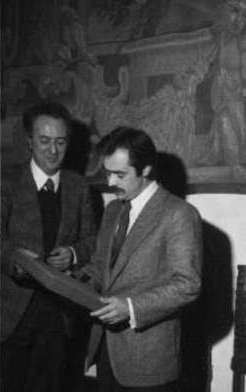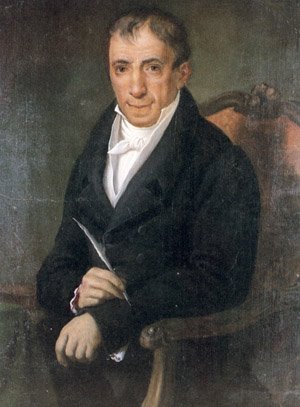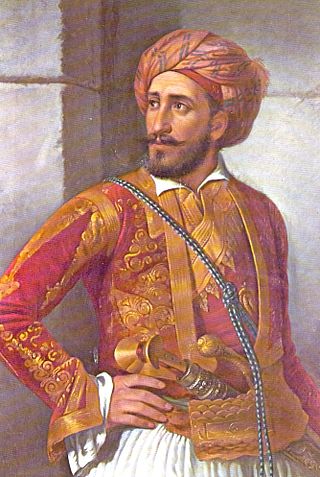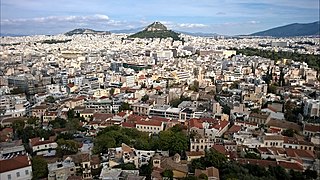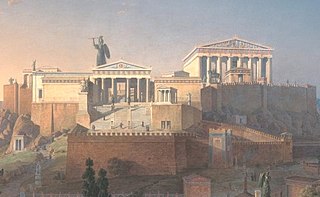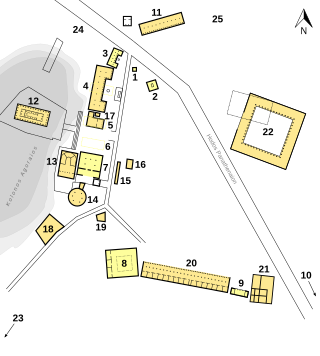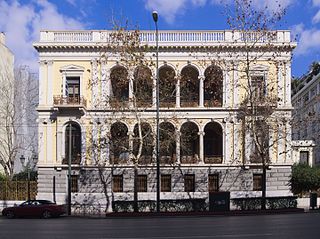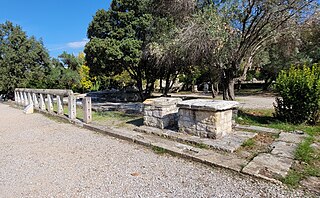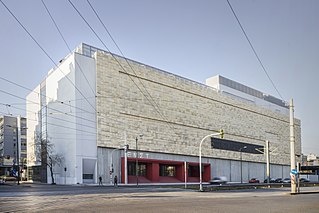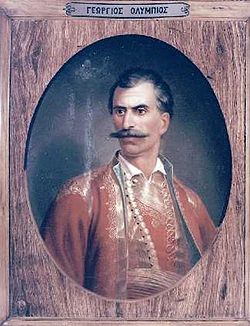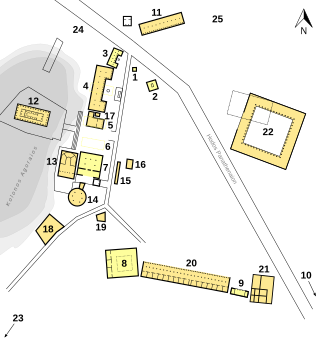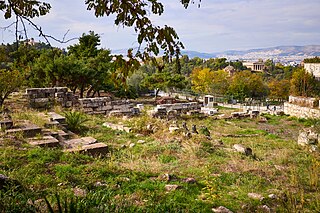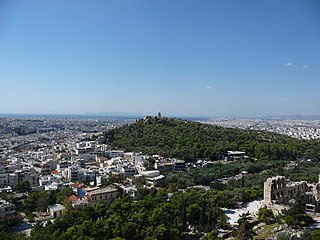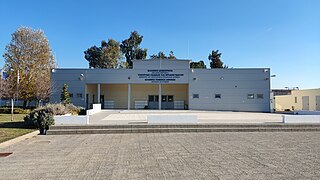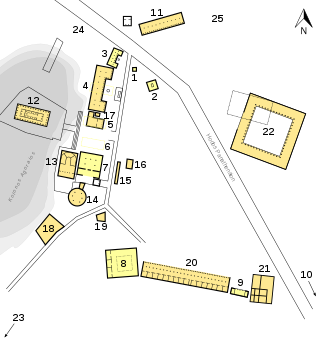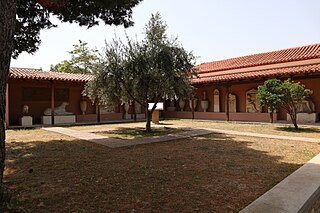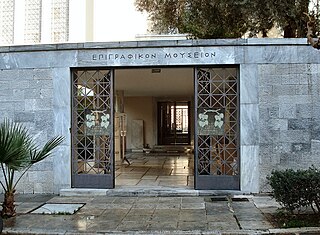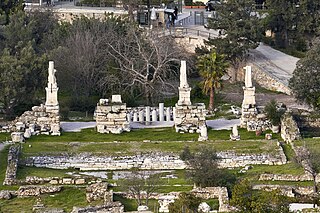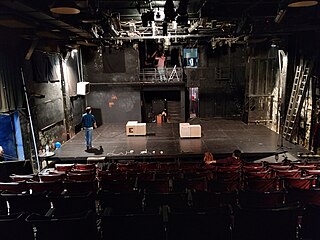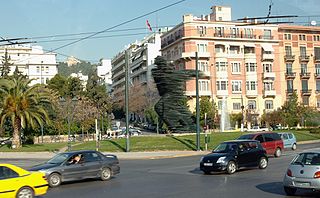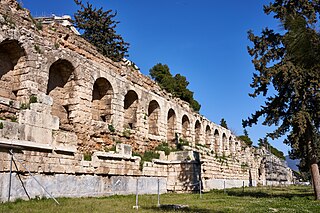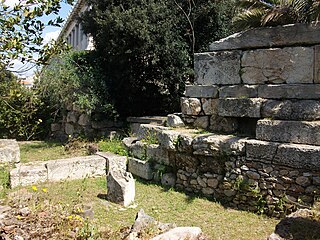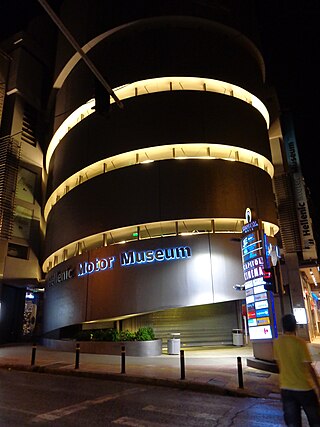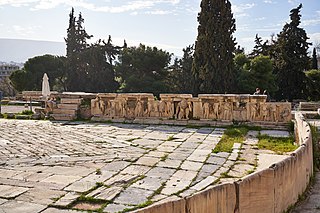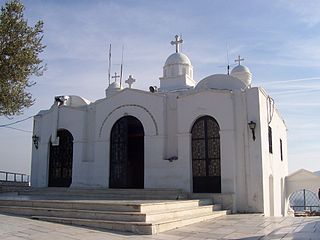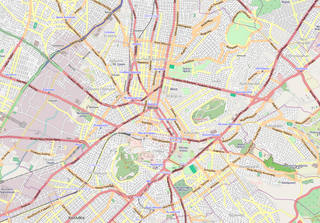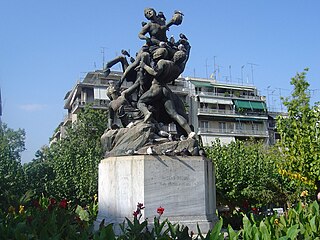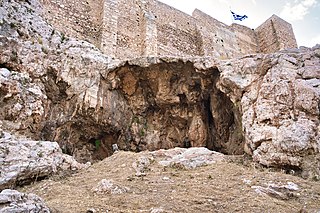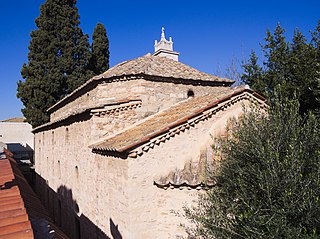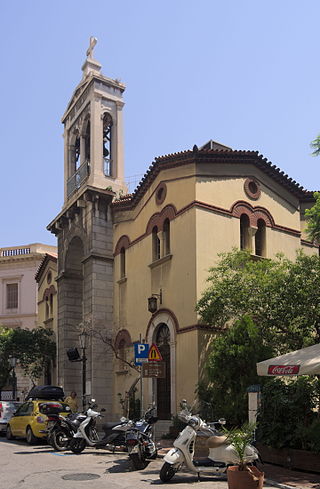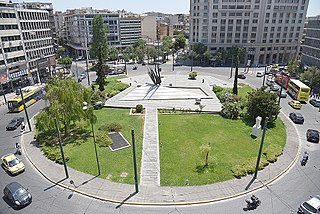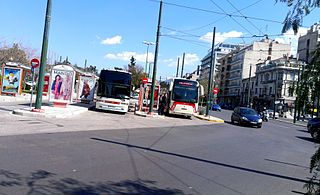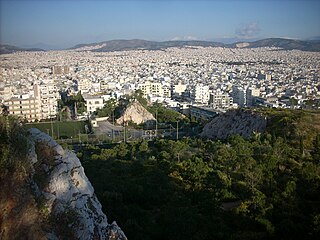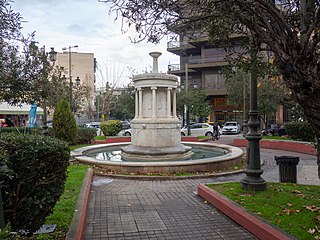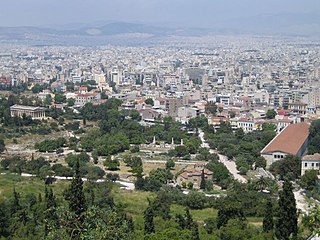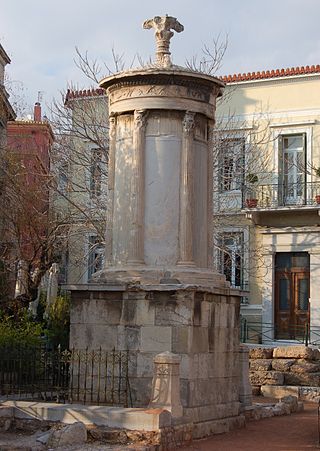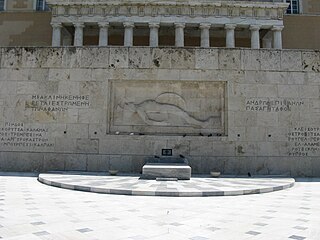70 Sights in Athens, Greece (with Map and Images)
Legend
Premium Sights
Book tickets, guided tours and activities in Athens.
Guided Free Walking Tours
Book free guided walking tours in Athens.
Welcome to your journey through the most beautiful sights in Athens, Greece! Whether you want to discover the city's historical treasures or experience its modern highlights, you'll find everything your heart desires here. Be inspired by our selection and plan your unforgettable adventure in Athens. Dive into the diversity of this fascinating city and discover everything it has to offer.
Sightseeing Tours in AthensActivities in AthensThe Theatre of Dionysus is an ancient Greek theatre in Athens. It is built on the south slope of the Acropolis hill, originally part of the sanctuary of Dionysus Eleuthereus. The first orchestra terrace was constructed on the site around the mid- to late-sixth century BC, where it hosted the City Dionysia. The theatre reached its fullest extent in the fourth century BC under the epistates of Lycurgus when it would have had a capacity of up to 25,000, and was in continuous use down to the Roman period. The theatre then fell into decay in the Byzantine era and was not identified, excavated and restored to its current condition until the nineteenth century.
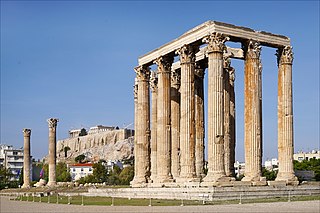
The Temple of Olympian Zeus, also known as the Olympieion or Columns of the Olympian Zeus, is a former colossal temple at the centre of the Greek capital, Athens. It was dedicated to "Olympian" Zeus, a name originating from his position as head of the Olympian gods. Construction began in the 6th century BC during the rule of the Athenian tyrants, who envisioned building the greatest temple in the ancient world, but it was not completed until the reign of Roman Emperor Hadrian in the 2nd century AD, some 638 years after the project had begun. During the Roman period, the temple, which included 104 colossal columns, was renowned as the largest temple in Greece and housed one of the largest cult statues in the ancient world.
The Benaki Museum, established and endowed in 1930 by Antonis Benakis in memory of his father Emmanuel Benakis, is housed in the Benakis family mansion in Athens, Greece. The museum houses Greek works of art from the prehistorical to the modern times, an extensive collection of Asian art, hosts periodic exhibitions and maintains a state-of-the-art restoration and conservation workshop. Although the museum initially housed a collection that included Islamic art, Chinese porcelain and exhibits on toys, its 2000 re-opening led to the creation of satellite museums that focused on specific collections, allowing the main museum to focus on Greek culture over the span of the country's history. This Museum in Athens houses over 100,000 artifacts from Greek history and showcases the many eras, civilizations and cultures which have influenced the development of Greece. Spread over a number of locations, the museum ranks among Greece’s foremost cultural institutions.
The Acropolis Museum is an archaeological museum focused on the findings of the archaeological site of the Acropolis of Athens. The museum was built to house every artifact found on the rock and on the surrounding slopes, from the Greek Bronze Age to Roman and Byzantine Greece. The Acropolis Museum also lies over the ruins of part of Roman and early Byzantine Athens.
The Arch of Hadrian, most commonly known in Greek as Hadrian's Gate, is a monumental gateway resembling—in some respects—a Roman triumphal arch. It spanned an ancient road from the center of Athens, Greece, to the complex of structures on the eastern side of the city that included the Temple of Olympian Zeus.
The Temple of Hephaestus or Hephaisteion, is a well-preserved Greek temple dedicated to Hephaestus; it remains standing largely intact today. It is a Doric peripteral temple, and is located at the north-west side of the Agora of Athens, on top of the Agoraios Kolonos hill. From the 7th century until 1834, it served as the Greek Orthodox church of Saint George Akamates. The building's condition has been maintained due to its history of varied use.
The Pnyx is a hill or hillside in central Athens, the capital of Greece. Beginning as early as 507 BC, the Athenians gathered on the Pnyx to host their popular assemblies, thus making the hill one of the earliest and most important sites in the creation of democracy.
The small district of Psirri is located in the historic center of Athens and is one of the oldest districts of the city. It spreads around Psirri Square or Heroes' Square, to which the five important streets of the district lead: Miaouli Street, Karaiskaki Street, Agioi Anargyroi Street, Aristofanous Street and Aeschylou Street.
9. Parthenon
The Parthenon is a former temple on the Athenian Acropolis, Greece, that was dedicated to the goddess Athena. Its decorative sculptures are considered some of the high points of classical Greek art, and the Parthenon is considered an enduring symbol of Ancient Greece, democracy, and Western civilization.
10. Socrates
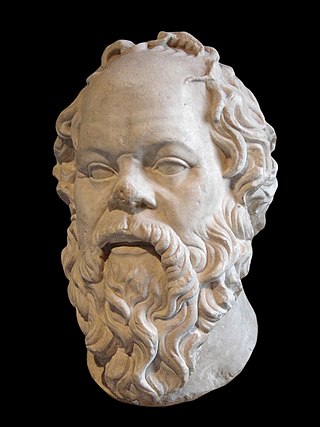
Socrates was a Greek philosopher from Athens who is credited as the founder of Western philosophy and as among the first moral philosophers of the ethical tradition of thought. An enigmatic figure, Socrates authored no texts and is known mainly through the posthumous accounts of classical writers, particularly his students Plato and Xenophon. These accounts are written as dialogues, in which Socrates and his interlocutors examine a subject in the style of question and answer; they gave rise to the Socratic dialogue literary genre. Contradictory accounts of Socrates make a reconstruction of his philosophy nearly impossible, a situation known as the Socratic problem. Socrates was a polarizing figure in Athenian society. In 399 BC, he was accused of impiety and corrupting the youth. After a trial that lasted a day, he was sentenced to death. He spent his last day in prison, refusing offers to help him escape.
11. Plato
Plato, was an ancient Greek philosopher of the Classical period who is considered a foundational thinker in Western philosophy and an innovator of the written dialogue and dialectic forms. He raised problems for what became all the major areas of both theoretical philosophy and practical philosophy, and was the founder of the Platonic Academy, a philosophical school in Athens where Plato taught the doctrines that would later become known as Platonism.
12. William Gladstone
William Ewart Gladstone was a British statesman and Liberal Party politician. In a career lasting over 60 years, he was Prime Minister of the United Kingdom for 12 years, spread over four non-consecutive terms beginning in 1868 and ending in 1894. He also was Chancellor of the Exchequer four times, for over 12 years. Apart from 1845 to 1847, he was a Member of Parliament (MP) from 1832 to 1895 and represented a total of five constituencies.
13. José Martí
José Julián Martí Pérez was a Cuban nationalist, poet, philosopher, essayist, journalist, translator, professor, and publisher, who is considered a Cuban national hero because of his role in the liberation of his country from Spain. He was also an important figure in Latin American literature. He was very politically active and is considered an important philosopher and political theorist. Through his writings and political activity, he became a symbol of Cuba's bid for independence from the Spanish Empire in the 19th century, and is referred to as the "Apostle of Cuban Independence". From adolescence on, he dedicated his life to the promotion of liberty, political independence for Cuba, and intellectual independence for all Spanish Americans; his death was used as a cry for Cuban independence from Spain by both the Cuban revolutionaries and those Cubans previously reluctant to start a revolt.
14. General José de San Martín
José Francisco de San Martín y Matorras, nicknamed "the Liberator of Argentina, Chile and Peru", was an Argentine general and the primary leader of the southern and central parts of South America's successful struggle for independence from the Spanish Empire who served as the Protector of Peru. Born in Yapeyú, Corrientes, in modern-day Argentina, he left the Viceroyalty of the Río de la Plata at the early age of seven to study in Málaga, Spain.
15. Statue of Eleftherios Venizelos
Eleftherios Kyriakou Venizelos was a Cretan Greek statesman and prominent leader of the Greek national liberation movement. He is noted for his contribution to the expansion of Greece and promotion of liberal-democratic policies. As leader of the Liberal Party, he held office as prime minister of Greece for over 12 years, spanning eight terms between 1910 and 1933. During his governance, Venizelos entered into diplomatic cooperation with the Great Powers and had a profound influence on the internal and external affairs of Greece. He has therefore been labelled as "The Maker of Modern Greece" and is still widely known as the "Ethnarch".
16. King Constantine I
Constantine I was King of Greece from 18 March 1913 to 11 June 1917 and from 19 December 1920 to 27 September 1922. He was commander-in-chief of the Hellenic Army during the unsuccessful Greco-Turkish War of 1897 and led the Greek forces during the successful Balkan Wars of 1912–1913, in which Greece expanded to include Thessaloniki, doubling in area and population. The eldest son of George I of Greece, he succeeded to the throne following his father's assassination in 1913.
17. George Canning
George Canning was a British Tory statesman. He held various senior cabinet positions under numerous prime ministers, including two important terms as foreign secretary, finally becoming Prime Minister of the United Kingdom for the last 119 days of his life, from April to August 1827.
18. Melina Mecouri
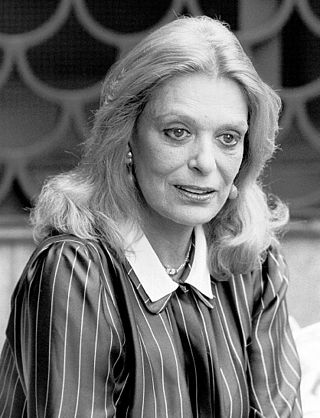
Maria Amalia "Melina" Mercouri was a Greek actress, singer, activist, and politician. She came from a political family that was prominent over multiple generations. She received an Academy Award nomination and won a Cannes Film Festival Best Actress Award for her performance in the film Never on Sunday (1960). Mercouri was also nominated for one Tony Award, three Golden Globes and two BAFTA Awards in her acting career. In 1987 she was awarded a special prize in the first edition of the Europe Theatre Prize.
19. Constantine Cavafy
Konstantinos Petrou Kavafis, known, especially in English, as Constantine P. Cavafy and often published as C. P. Cavafy, was a Greek poet, journalist, and civil servant from Alexandria. A major figure of modern Greek literature, he is sometimes considered the most distinguished Greek poet of the 20th century. His works and consciously individual style earned him a place among the most important contributors not only to Greek poetry, but to Western poetry as a whole.
20. The Temple of Athena Nike
The Temple of Athena Nike is a temple on the Acropolis of Athens, dedicated to the goddesses Athena and Nike. Built around 420 BC, the temple is the earliest fully Ionic temple on the Acropolis. It has a prominent position on a steep bastion at the south west corner of the Acropolis to the right of the entrance, the Propylaea. In contrast to the Acropolis proper, a walled sanctuary entered through the Propylaea, the Victory Sanctuary was open, entered from the Propylaea's southwest wing and from a narrow stair on the north. The sheer walls of its bastion were protected on the north, west, and south by the Nike Parapet, named for its frieze of Nikai celebrating victory and sacrificing to their patroness, Athena and Nike.
21. Μνημείο πεσόντων του Πολυτεχνείου
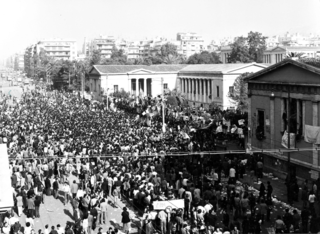
The Athens Polytechnic uprising occurred in November 1973 as a massive student demonstration of popular rejection of the Greek military junta of 1967–1974. It began on 14 November 1973, escalated to an open anti-junta revolt, and ended in bloodshed in the early morning of 17 November after a series of events starting with a tank crashing through the gates of the Athens Polytechnic.
22. Odysseas Elytis
Odysseas Elytis was a Greek poet, man of letters, essayist and translator, regarded as the definitive exponent of romantic modernism in Greece and the world. He is one of the most praised poets of the second half of the twentieth century, with his Axion Esti "regarded as a monument of contemporary poetry". In 1979, he was awarded the Nobel Prize in Literature.
23. Areopagus
The Areopagus is a prominent rock outcropping located northwest of the Acropolis in Athens, Greece. Its English name is the Late Latin composite form of the Greek name Areios Pagos, translated "Hill of Ares". The name Areopagus also referred, in classical times, to the Athenian governing council, later restricted to the Athenian judicial council or court that tried cases of deliberate homicide, wounding, and religious matters, as well as cases involving arson of olive trees, because they convened in this location. The war god Ares was supposed to have been tried by the other gods on the Areopagus for the murder of Poseidon's son Halirrhothius.
24. Alexandros Panagoulis
Alexandros Panagoulis was a Greek politician and poet. He took an active role in the fight against the Regime of the Colonels (1967–1974) in Greece. He became famous for his attempt to assassinate dictator Georgios Papadopoulos on 13 August 1968, but also for the torture to which he was subjected during his detention. After the restoration of democracy, he was elected to the Greek parliament as a member of the Centre Union (E.K.).
25. Εθνικό Αστεροσκοπείο Αθηνών
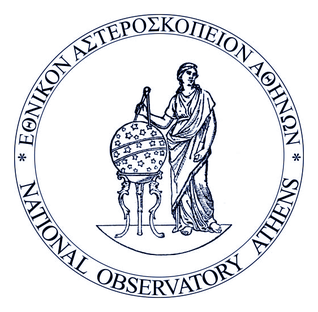
The National Observatory of Athens is a research institute in Athens, Greece. Founded in 1842, it is the oldest research foundation in Greece. The Observatory was the first scientific research institute built after Greece became independent in 1829, and one of the oldest research institutes in Southern Europe. It was built around the same period as the United States Naval Observatory.
26. Adamantios Korais
Adamantios Korais or Koraïs was a Greek scholar credited with laying the foundations of modern Greek literature and a major figure in the Greek Enlightenment. His activities paved the way for the Greek War of Independence and the emergence of a purified form of the Greek language, known as Katharevousa. Encyclopædia Britannica asserts that "his influence on the modern Greek language and culture has been compared to that of Dante on Italian and Martin Luther on German".
27. Yannis Makriyannis
Yiannis Makriyiannis, born Ioannis Triantaphyllou, was a Greek merchant, military officer, politician and author, best known today for his Memoirs. Starting from humble origins, he joined the Greek struggle for independence, achieving the rank of general and leading his men to notable victories, most notably the successful defense of Nafplio in the Battle of the Lerna Mills. Following Greek independence, he had a tumultuous public career, playing a prominent part in the granting of the first Constitution of the Kingdom of Greece and later being sentenced to death and pardoned.
28. Lykavitos
Mount Lycabettus, also known as Lycabettos, Lykabettos or Lykavittos, is a Cretaceous limestone hill in the Greek capital Athens. At 277 meters (908 feet) above sea level, its summit is the highest point in Central Athens and pine trees cover its base. The name also refers to the residential neighbourhood immediately below the east of the hill.
29. Athena Promachos statue place
The Athena Promachos was a colossal bronze statue of Athena sculpted by Pheidias, which stood between the Propylaea and the Parthenon on the Acropolis of Athens. Athena was the tutelary deity of Athens and the goddess of wisdom and warriors. Pheidias also sculpted two other figures of Athena on the Acropolis, the huge gold and ivory ("chryselephantine") cult image of Athena Parthenos in the Parthenon and the Lemnian Athena.
30. Kostis Palamas
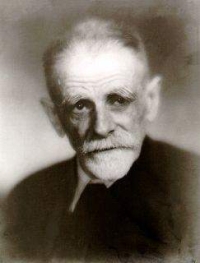
Kostis Palamas was a Greek poet who wrote the words to the Olympic Hymn. He was a central figure of the Greek literary generation of the 1880s and one of the cofounders of the so-called New Athenian School along with Georgios Drosinis and Ioannis Polemis.
31. Ποικίλη Στοά
The Stoa Poikile or Painted Portico was a Doric stoa erected around 460 BC on the north side of the Ancient Agora of Athens. It was one of the most famous sites in ancient Athens, owing its fame to the paintings and war-booty displayed within it and to its association with ancient Greek philosophy, especially Stoicism.
32. Numismatic Museum
The Numismatic Museum of Athens is one of the most important museums in Greece and it houses a collection of over 500,000 coins, medals, gems, weights, stamps and related artefacts from 1400BC to modern times. The collection constitutes one of the richest in the world, paralleled by those of the British Museum in London, the Bibliothèque Nationale in Paris, the State Hermitage Museum in St. Petersburg, the Bode Museum in Berlin, and the American Numismatic Society in New York. The museum itself is housed in the mansion of the archaeologist Heinrich Schliemann, formally known as Iliou Melathron.
33. Monument of the Eponymous Heroes
The Monument of the Eponymous Heroes (Ancient Greek: Μνημείο των Επωνύμων Ηρώων, romanized: Mnēmeio tōn Epōnymōn Hērōōn, located in the Ancient Agora of Athens, Greece adjacent to the Metroon, was a marble podium that bore the bronze statues of the heroes representing the phylai of Athens. The monument was surrounded by a wooden fence on stone posts. All that remains on the modern agora are pieces of a long statue base with the space for ten statues and two tripods at the ends with a partially restored fence. The large size and prominent position make the monument into a landmark for the Agora visitors.
34. National Museum of Contemporary Art
The National Museum of Contemporary Art, is a national museum focused on exhibiting contemporary Greek and international art in Athens. It was established in October 2000. Its founding director, Anna Kafetsi, previously served as curator for the 20th century collection at the National Gallery of Athens.
Wikipedia: National Museum of Contemporary Art, Athens (EN), Website
35. Giorgakis Olympios
Giorgakis Olympios was an armatole and military commander during the Greek War of Independence against the Ottoman Empire. Noted for his activities with the Filiki Eteria in the Danubian Principalities, he is considered to be a leading figure of the Greek Revolution.
36. Royal Stoa
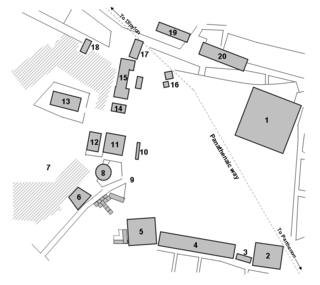
Stoa Basileios, meaning Royal Stoa, was a Doric stoa in the northwestern corner of the Athenian Agora, which was built in the 6th century BC, substantially altered in the 5th century BC, and then carefully preserved until the mid-second century AD. It is among the smallest known Greek stoas, but had great symbolic significance as the seat of the Athenian King Archon, repository of Athens' laws, and site of "the stone" on which incoming magistrates swore their oath of office.
37. Temple of Apollo Patroos
The Temple of Apollo Patroos is a small ruined temple on the west side of the Ancient Agora of Athens. The original temple was an apsidal structure, built in the mid-sixth century BC and destroyed in 480/79 BC. The area probably remained sacred to Apollo. A new hexastyle ionic temple was built ca. 306-300 BC, which has an unusual L-shaped floor plan. Some fragments from the sculptural decoration of this structure survive. The colossal cult statue, by Euphranor, has also been recovered.
38. Eleusinion
Eleusinion, also called the City Eleusinion was a sanctuary on the lower part of the north slope of the Acropolis in Athens, Greece, dedicated to Demeter and Kore (Persephone). It was the central hub of Eleusinian Mysteries within Athens and the starting point for the annual procession to Eleusis, in the northwest of Attica. Religious activity is attested in the area from the 7th century BC and construction took place throughout late Archaic, Classical, Hellenistic, and Roman periods. The sanctuary was enclosed within the new city walls built after the Herulian sack of Athens in AD 267 and it remained in use until the late fourth century AD.
39. Philopappos Monument
The Philopappos Monument is an ancient Greek mausoleum and monument dedicated to Gaius Julius Antiochus Epiphanes Philopappos or Philopappus, a prince from the Kingdom of Commagene. It is located on Mouseion Hill in Athens, Greece, southwest of the Acropolis.
40. Mosque of Athens
The Mosque Of Athens or Athens Mosque is a mosque in the Votanikos neighbourhood of Athens, Greece. It is the first official mosque in the Greek capital since the Greek War of Independence. Athens was the only European capital without a mosque until its construction. The project faced opposition from the Greek Orthodox Church and civil protests.
41. Stoa of Zeus Eleftherios
The Stoa of Zeus at Athens, was a two-aisled stoa located in the northwest corner of the Ancient Agora of Athens. It was built c. 425 BC–410 BC for religious purposes in dedication to Zeus by the Eleutherios : a cult founded after the Persian War. Stoas were not commonly used for religious purposes, but were typically built for promenades and meetings.
42. Kerameikos Archaeological Museum
The Kerameikos Archaeological Museum is located in Kerameikos, Athens, Greece and was built in 1937. It houses many important early Geometric art pieces that date as far back as 860 BC. It was expanded in the 1960s by the Boehringer brothers of Boehringer Ingelheim fame. Its official address is Ermou, Athens 125, Greece.
43. Epigraphical Museum
The Epigraphical Museum of Athens, Greece, is unique in Greece and the largest of its kind in the world. Its collection comprises 14,078, mostly Greek, inscriptions, which cover the period from early historical times to the Late Roman period, primarily in Greece. It is situated in the south wing of the National Archaeological Museum of Athens. It comprises an internal and external courtyard (atrium), a lobby, eleven rooms, a large hypostyle Pi-shaped corridor, a gallery, offices, a laboratory for the conservation of inscribed stone monuments and lavatories. Only the courtyards, lobby and four rooms are open to the public, while the rest is reserved for researchers. A full photographic archive of the collection is being assembled for future visitors.
44. Άλσος Βεΐκου
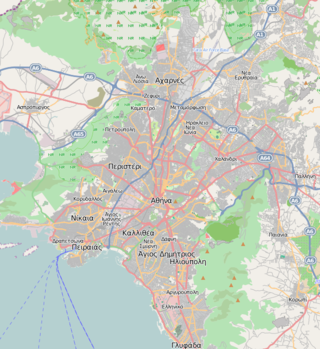
Alsos Veikou is a grove of Athens within the boundaries of the Municipality of Galatsi. Specifically, it is located in the northwestern foothills of Tourkovounia. It took its name from the fighter of the Greek Revolution, Lambros Veikos, who owned acres in the area. Today it is a huge green area and is one of the largest lungs of Athens. It has a cafeteria, playground, stadiums, theater, open-air cinema etc. It is located just opposite the Medieval Church of Agios Georgios and the Galatsi Olympic Gym.
45. Odeon of Agrippa
The Odeon of Agrippa was a large odeon located in the centre of the ancient Agora of Athens. It was built about 15 BC, occupying what had previously been open space in the centre of the Agora. It was a gift to the people of Athens by Marcus Vipsanius Agrippa, a Roman statesman and general.
46. Embros
The Theater in the Old Printing House of Embros or Theater EMBROS is a theatrical space in the district of Psirri in the municipality of Athens, in a listed building constructed in the 1930s and which originally functioned as a printing house of the newspaper EMPROS. From 1988 to 2007 it operated for the first time as a theater. Although it belonged to the Ministry of Culture, in 2011 it was occupied by the artistic "Mavili Movement" and since then it has been used as a self-managed theater. In March 2022, the space was granted by the Public Properties Company to the Municipality of Athens and continues to operate as a self-managed space.
47. Dipylon
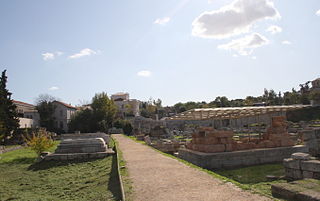
The Dipylon was the main gate in the city wall of Classical Athens. Located in the modern suburb of Kerameikos, it led to the namesake ancient cemetery, and to the roads connecting Athens with the rest of Greece. The gate was of major ceremonial significance as the starting point of the procession of the Great Panathenaea, and accordingly it was a large, monumental structure, "the largest gate of the ancient world". Erected in 478 BC as part of Themistocles' fortification of Athens and rebuilt in the 300s BC, it remained standing and in use until the 3rd century AD.
48. Runner
"The Drome" is a sculpture by Kostas Varotsos, located opposite the Hilton Hotel in Athens. Made of glass and with an iron frame, it was originally created in August 1988 in Omonia Square, at the top of the pyramidal fountain that existed at the time. The sculpture was created as part of the artistic action "Dromena" organized by the Municipality of Athens under Mayor Miltiadis Evert, at the initiative of the Deputy Mayor of Cultural Affairs Stavros Xarchakos.
49. Pandroseion
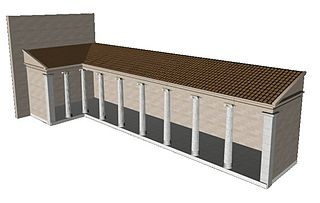
The Pandroseion was a sanctuary dedicated to Pandrosus, one of the daughters of Cecrops I, the first king of Attica Greece, located on the Acropolis of Athens. It occupied the space adjacent to the Erechtheum and the old Temple of Athena Polias.
50. Stoa of Eumenes
The Stoa of Eumenes was a Hellenistic colonnade built on the South slope of the Acropolis, Athens and which lay between the Theater of Dionysus and the Odeon of Herodes Atticus The gallery was donated to the city of Athens by the king of Pergamon, Eumenes II, around 160 BC. Vitruvius makes reference to the building when speaking about the purpose of stoai erected near theatres that served as a refuge for the spectators in inclement weather conditions or as stores for theatre props.
51. Library of Pantainos
The Library of Pantainos was a building in ancient Athens. It was located at the southeast end of the Agora of Athens, south of the Stoa of Attalus, on the left side of Panathenaion Street. It was built by the Athenian philosopher Titus Flavius Pantainos between 98 and 102 AD, during the reign of the Roman emperor Trajan. The library building was dedicated to Athena Archegetis, with Trajan himself and the people of Athens, according to an inscription on the lintel of the main entrance, which is preserved embedded in the late Roman wall,.
52. Hellenic Motor Museum
The Hellenic Motor Museum is a car museum in Athens. It is owned by the Theodore Charagionis Foundation and opened in March 2011. The museum is situated in central Athens near the National Archaeological Museum, on the three top floors of the Athenian Capitol shopping mall.
53. Bema of Phaedrus
The Bema of Phaidros is the marble platform created in the third century CE that served as stage front to the Theatre of Dionysos in Athens. It is decorated with a Neo-Attic Roman sculpture of the Hadrianic or Antonine period, this sculpture was dismantled sometime in antiquity, moved from an unknown location, and rebuilt into the bema of the Theatre by Phaidros, archon of Athens. Four stone reliefs decorate the stage front illustrating scenes from the life of Dionysos they are: 1) The birth of Dionysos, 2) the entrance of Dionysos into Attica, 3) the sacred marriage of Dionysos and the Basilinna and 4) the enthronement of Dionysos. These scenes are framed by crouching Silenoi.
54. Chapel of St. George
Agios Georgios is a medieval church in Attica, located on top of Lycabettus Hill. In the depictions of travelers, it seems that there was a temple in this area in the past. Also, thanks to two inscriptions found, we know that originally there was the "cemetery of Anastasios Harkeos and Ev. Orandas" as well as "Cemetery of interest". When the first church fell into ruins, a new single-aisled, basilica temple was built on the same foundations for Agios Georgios. On the floor there is an inscription indicating that the chapel of Agios Georgios was established by the Metropolitan of Athens Benedict (1782-1785). Later the church was expanded with the addition of two chapels, Prophet Elias and Agios Konstantinos.
55. Arriforion
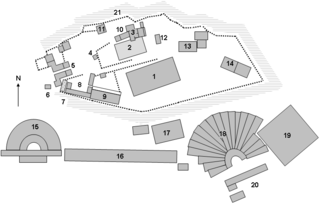
The Arrephorion or House of the Arrephoroi is a building conjectured to have been on the Acropolis of Athens based on a passage in Pausanias. The discovery of the foundations of a substantial building on the north-west edge of the Acropolis has led to the identification of this structure with the Arrephorion.
56. Mavili Square
Mavili Square is a small district, located on the left side going up Vasilissis Sofias Avenue, to the west of Ampelokipi and to the east of Lycabettus Hill. It took its name from Mavili Square, around which it developed. It is home to the U.S. Embassy and the Athens Concert Hall and is served by Megaro Mousikis Metro Station and many bus and trolleybus lines.
57. Pandion
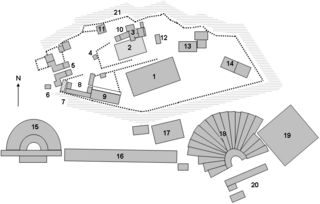
The Sanctuary of Pandion is the name sometimes given to the remains of a building located in the south-east corner of the Acropolis of Athens. Its foundations were found during the excavations for the construction of the Old Acropolis Museum (1865–1874).
58. Θησεύς σώζων την Ιπποδάμειαν
The sculptural group of Theseus Saving Hippodamia by Johannes Pfuhl is located in Viktoria Square in Athens. It is considered one of the most important public sculptures of the 20th century in the city.
59. Sanctuary of Aglauros
The Aglaureion, or the Sanctuary of Aglauros, was an ancient sanctuary located in the Acropolis in Athens, Greece. It was dedicated to Aglauros, a Greek mythological figure who was the daughter of King Cecrops and the sister of Erysichthon, Pandrosus, and Herse. The sanctuary was believed to be the site where Aglauros had sacrificed herself to protect the city from invasion.
60. Holy Unmercenaries
Saints Anargyri is a medieval church, in the Plaka district, in Athens, which is located on the northern footsteps of the Acropolis, on the contribution of Rectaniou and Erechtheus Streets. Its alternative name as Kolokynthos is associated with the Kolokynthi family, Athenian family, which is allegedly the owner of the monastery's area during the 17th century. From the 18th century until today, the site has been part of the Patriarchate of Jerusalem and is a metochi, while, in the past, the place of residence of Exarch, the Holy Sepulcher. It was erected during the 17th century, initially functioning as the Catholic female monastery, which included it. It is a single -aisled arched basilica with a cylindrical dome that was exclusively formed in Athens during the Ottoman period of domination, influenced by the Ottoman public buildings. It is built at the site of Aphrodite's earlier temple, as well as, according to tradition, on graves of members of the Paleologian family. In this temple, the Holy Light of Resurrection reaches first in Greece by Jerusalem. The day before becoming a magnificent Epitaph on the streets of the area.
61. Saint George Karytsis
Agios Georgios tou Karykis or Karytsi is a Christian church in Athens, Greece. The original medieval church was destroyed during the revolution of 1821 and was roughly rebuilt under King Otto. It was then reconstructed from the ground up and with larger dimensions in 1845-1849, designed by Lysandros Kaftanzoglou. He did not retain any trace of the old temple. The architecture of today's church is of Greek Byzantine style, while it is characterized by the distinct central pillar of gray marble, on top of which there is a white bell tower. In 1849 the dome collapsed and struts were added to the side walls for additional support.
62. Πομπείον
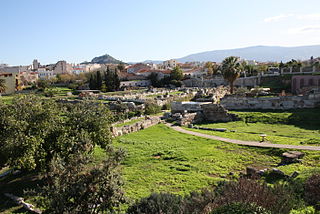
The Pompeion was a large building of ancient Athens located between the Dipylon and the Holy Gate, west of the Ancient Agora, the first building of the inner Kerameikos. This building was built around the beginning of the 4th century BC, while its construction seems to have begun in the 5th century BC.
63. National Historic Museum
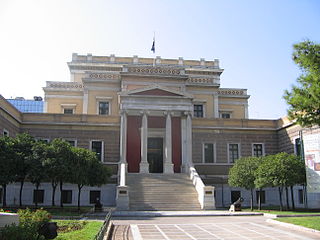
The National Historical Museum is a historical museum in Athens. Founded in 1882, is the oldest of its kind in Greece. It is located in the Old Parliament House at Stadiou Street in Athens, which housed the Hellenic Parliament from 1875 until 1932. A branch of the National History Museum has been organized and operated there since 2001.
64. Πλατεία Καραϊσκάκη
Karaiskaki Square is an important urban hub of Athens. It is located 500 meters west of Omonia Square, with which it communicates through Agiou Konstantinou Street. Karaiskaki Square is located in the district of Metaxourgeio and below it is bounded the homonymous station of metro line 2. As the square is the largest and most famous of the district, many mistakenly call it Metaxourgeio Square, which is actually two blocks to the west, at the junction of Lenorman and Achilleos streets.
65. Πλατεία Αιγύπτου
Egypt Square was a historic square at the old northern end of the 1st municipal unit of Athens, on the way to the former country destination of Patissia. The square was located between Patission Street and Pedion tou Areos, close to the business and educational buildings erected by many Greek Egyptians, above Omonoia and along the road.
66. Elikonas Hill
Helicon or Alepotrypa is a low hill of Athens, located in Kypseli district, north of Kypseli Square and on the borders with the Municipality of Galatsi. It is located east of Patision Avenue, at the end of Amorgos and Anafi streets. It is a small hill at an altitude of 184 meters, which occupies an area of about 140 acres. It is surrounded by the streets of Travllandonis, Amorgos, Megisti, Astypalaia, Harmony and Helicos from which the hill has been named. In the past, the ownership quarries of the Kourousis brothers have worked. Since 1934 he has been declared a reforest. In the late 1980s it was built on part of the youth hill that includes sports facilities, located by the Athenian football team. Underground from the hill will cross the Metro Line 4 and near the hill, at the park at the intersection of Hopf Streets, Parnithos and Agia Glyceria, will be the Helicic Metro Station, which will have the name of the hill.
67. Πλατεία Μεταξουργείου
Metaxourgio Square is a square in Athens and the most historic of the homonymous district. It is located at the intersection of Lenorman and Achilles streets, about the center of the district. It is important to note for those who are not familiar with the city of Athens that Metaxourgio Square should not be confused with Karaiskakis Square, the largest and most famous in the area where the metro station is located. The square became known by this name from a silk fabric plant founded there in 1835, which over time remained for the whole area. The plant was installed at the unfinished mansion of Prince George Kantakouzenos, which still exists today on streets of Alexandrou, Myllerou and Yatrakou. From Metaxourgio Square, the carnival attractions of the old city of Athens, such as the Gaitanaki, also started. Once the square was twice as high as today. But the widening of Achilles Street, which was a small narrow road, with the aim of communicating Athens with the Athens -Corinth Highway, resulted in about half the square disappearing.
68. Museum of the Ancient Agora
The ancient Agora of Athens is the best-known example of an ancient Greek agora, located to the northwest of the Acropolis and bounded on the south by the hill of the Areopagus and on the west by the hill known as the Agoraios Kolonos, also called Market Hill. The Agora's initial use was for a commercial, assembly, or residential gathering place.
69. Choragic Monument of Lysicrates
The Lysikratus monument, also known as Diogenes' lantern, is a stone -built stone building, the best surviving sponsorship of antiquity. It is located in Athens, on the ancient Tripods Road and was built by Lysikratis in 335-334 BC. In order to support and highlight an important object at its top: the bronze tripod given to him as a prize for his role as a sponsor of the winning play in the latest dramatic struggles. The sponsors were wealthy citizens who took over the formation of the dance, that is, the group of people who participated in plays and official ceremonies. The bronze tripod was the first prize of the theatrical events and was awarded to the sponsor of the dramatic work. The tripods were assumed to the sanctuary of Dionysus or placed on the neighboring tripod road. In order to expose themselves in a more magnificent way, the tripods sometimes entered a high basis, which could be in the form of a column, or even a Naisse -shaped monument, such as that of Lysikratos.
70. Tomb of Unknown Soldier
The Tomb of the Unknown Soldier is located in Syntagma Square, in front of the Hellenic Parliament building. It was constructed in the 1930s and, like all monuments of this type, is a cenotaph in honor of the fallen in the wars. The first monument to the unknown soldier of the struggle of 1821 was erected on January 16, 1858, by decision of the Municipality of Hermoupolis, Syros.
Share
How likely are you to recommend us?
Disclaimer Please be aware of your surroundings and do not enter private property. We are not liable for any damages that occur during the tours.

